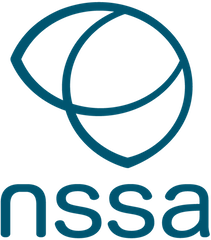The challenge of performing paediatric EEGs
Although all labs have their challenges – technical issues, difficult patients, seizure safety and more – I wanted to talk with you about the particular challenges of performing EEGs in the paediatric setting. An EEG, although a harmless and pain free procedure, can often times be scary and unfamiliar to children at a range of ages. In addition to this, children of the same age with different temperaments or disabilities will react differently each time. It is the role of scientists to take all things into consideration when attempting to achieve both a successful EEG set up, but also a quality recording that will answer the clinical question at hand.
Patients and Cooperation
As you can imagine, patient cooperation can be limited or completely absent when performing EEGs for children. With non-cooperative children, it’s important that the scientist prioritises the safety of themselves and child, learns when a set up should be aborted and when they should persist.
Tips and tricks:
All hands on deck
We encourage for younger (<3 years old) or behaviourally difficult children to be accompanied by two parents/guardians. This means there is a spare set of hands to help distract or calm the distressed child. As scientists, we also try our best to work in pairs or sometimes groups for kids we know might be a little challenging.
Technology and toys
We love technology here at RCH; iPads and Coco Melon are a scientist’s best friend in trying times! There is also a TV, usually playing ABC Kids, in all clinic rooms. This is also true for things like cooperation with hyperventilation (HV), do we really think this child will pretend to blow out candles on their pretend birthday cake for a full three minutes? Look, we are going to try aren’t we… Colourful pin wheels were our go to previously, but COVID has shaken that up a bit.
Sleep deprivation
Babies and young children will have their EEG booking in the afternoon, and parents are asked to have them ready to nap. This ensures the child will sleep during the recording; so even if the set-up is difficult (you do get used to the crying), a nice clean sleep recording can be achieved (most of the time).
Time
Although there is never quite enough hours in the day, we book our outpatient appointments in a way that allows us the time to get a good history, develop a rapport, capture a good period of sleep, and perform activation procedures to the best of each child’s ability. Time is a luxury; however, it is something that allows us to deliver a high standard of testing.
Parents
Often one the biggest barriers to us performing our job successfully is the parents. Sometimes parent behaviour needs to be managed in a respectful way. They are often just as stressed and anxious as the children, if not more! The scientist needs to be able to carry themselves confidently and assertively, without over stepping their clinical role, whilst still reassuring parents to the best of their ability.
Tips and Tricks:
Be firm
Sometimes in order to do our job well, you need to be firm with parents. Show them exactly how you would like them to hold their child, tell them not to stand in front of the camera, that letting their child crawl around with the expensive equipment dragging on the floor behind them is not okay and, no, please don’t drop that equipment in the toilet!
Make them comfortable
If the parents are comfortable and relaxed, the child is more likely to feed off that, and also be more relaxed. Explain the procedure well, put mum or dad’s feet up, ask if they need a break. If the parent is confident in your ability and are comfortable, the procedure is easier for everyone.
EEG interpretation and artefact
The subjective nature of EEG interpretation is already a bit of a doozey. Overcalling normal variants, variability with age, and convincing artefacts – the world of paediatric EEG is tricky at the best of times. For example, neonatal EEG which changes from day to week, and discharges can be a normal variant in one age group, but abnormal in another. In addition to this, there is a range of novel artefacts which need to be recognised and mitigated effectively. Things like patting, sucking, rocking, hiccups, sniffs, and respiration artefact are all commonly encountered daily in paediatric world.
Tips and Tricks
Annotate
We have all heard it before, but annotate, annotate, annotate – change in position, movement, what the parent is doing, what the child is doing; there is no such thing as too many useful annotations. It is essential that any sort of rhythmic artefact is not mistaken for a genuine rhythm. Although the video is there for a short while, after the video is deleted, it is the scientist’s annotations that guide any future interpretations of that EEG.
Positioning
Good patient positioning can be crucial to obtaining a good EEG. Resting the child’s head on a pillow or towel instead of the parent’s arm, repositioning the patient so they are resting midline after they have fallen asleep, asking mum or dad not to rock or bounce the child so vigorously; these are all things the scientist needs to keep an eye on throughout the recording.
All in all, performing paediatric EEGs can be a difficult but extremely rewarding process. Children aren’t always able to tell us how they feel, can be poor historians, and generally need to be reassured. As scientists, if we develop a rapport, show compassion, and take our time, it more often than not results in a successful EEG set up and recording.
Written by Megan Walker
Royal Children’s Hospital - Melbourne

